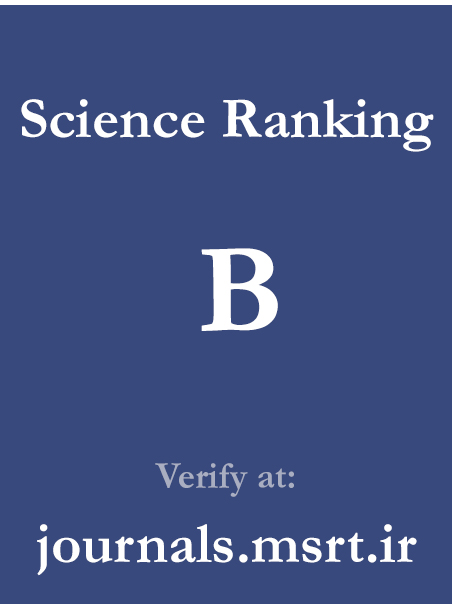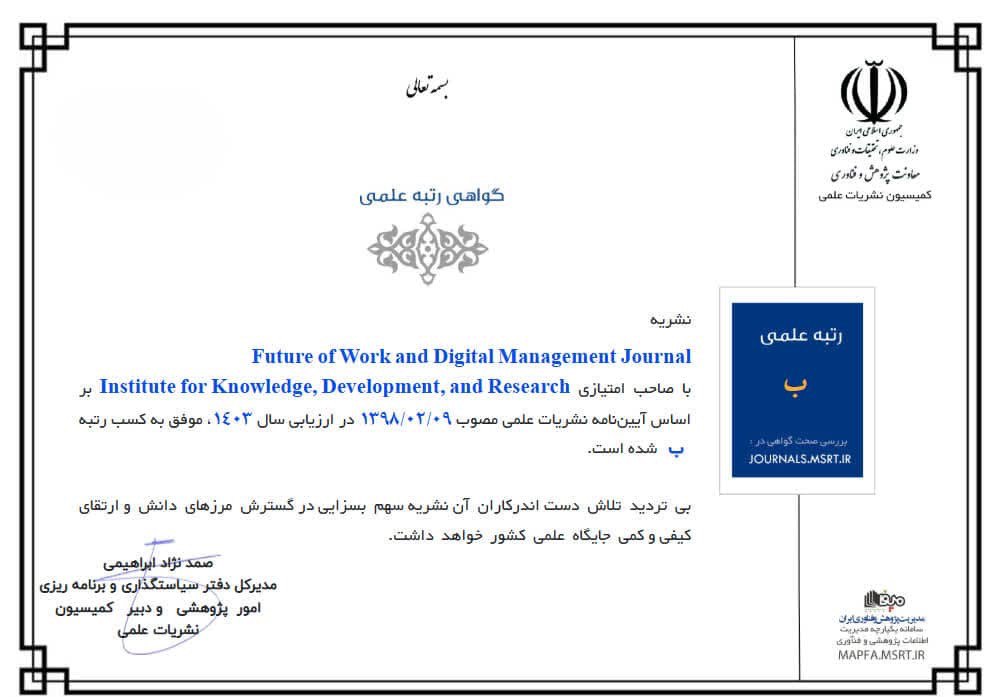Managerial Flexibility and Operational Efficiency: The Mediating Role of Role Consistency
Keywords:
Managerial Flexibility, Role Consistency, Operational EfficiencyAbstract
This study aimed to investigate the relationship between managerial flexibility and operational efficiency, with role consistency examined as a potential mediating variable. A descriptive correlational design was employed, and data were collected from 419 participants working in medium and large-scale organizations across Pakistan. The sample size was determined using the Morgan and Krejcie table, and participants were selected through stratified random sampling. Standardized instruments were used to measure managerial flexibility (Combe & Greenley, 2004), role consistency (adapted from Rizzo et al., 1970), and operational efficiency (Ward et al., 1998). Data analysis included Pearson correlation to examine bivariate relationships using SPSS-27 and Structural Equation Modeling (SEM) in AMOS-21 to test the hypothesized mediation model and evaluate model fit indices. Pearson correlation results showed that managerial flexibility was significantly correlated with operational efficiency (r = .54, p = .001) and role consistency (r = .47, p = .002), while role consistency was also positively correlated with operational efficiency (r = .49, p = .003). SEM results indicated excellent model fit (χ² = 164.87, df = 84, χ²/df = 1.96, CFI = 0.96, RMSEA = 0.046). The direct effect of managerial flexibility on operational efficiency was significant (B = 0.44, β = .46, p = .001), as were the paths from managerial flexibility to role consistency (B = 0.41, β = .47, p = .001) and role consistency to operational efficiency (B = 0.36, β = .42, p = .002). The indirect effect of managerial flexibility on operational efficiency through role consistency was also significant (B = 0.15, β = .20, p = .003), confirming partial mediation. The results underscore the importance of embedding role consistency within flexible managerial environments to optimize operational efficiency, highlighting a balanced strategic approach for enhancing organizational performance.
Downloads
References
[1] A. Talpă, I. Ionescu, M. Avădanei, C. Loghin, and C. Tiţă, "Ensuring Consistency in Apparel Production: The Role of Technical Sheets," pp. 467-472, 2025, doi: 10.2478/9788367405829-068.
[2] N. Herger, "Estimating Rivalness: The Role of Choice Consistent Parameter Normalisation," SSRN Electronic Journal, 2020, doi: 10.2139/ssrn.3753331.
[3] P. Winkielman and A. Nowak, "Beyond the Features: The Role of Consistency in Impressions of Trust," Social Psychological Bulletin, vol. 17, 2022, doi: 10.32872/spb.9233.
[4] A. Edwards, "The Role of Orthographic Consistency in the Set for Variability Task," 2021, doi: 10.17605/osf.io/wns9e.
[5] M. A. Costa‐Gomes, Y. Ju, and J. Li, "Role‐reversal Consistency: An Experimental Study of the Golden Rule," Economic Inquiry, vol. 57, no. 1, pp. 685-704, 2018, doi: 10.1111/ecin.12708.
[6] K. V. Drozdova, H. V. Kucherenko, and A. O. Bohatov, "The Role of the Principle of Systematicity and Consistency in the Professional Competence Formation," Innovate Pedagogy, vol. 1, no. 43, pp. 101-104, 2022, doi: 10.32843/2663-6085/2022/43/1.20.
[7] M. K. Daoust, "The Explanatory Role of Consistency Requirements," Synthese, vol. 197, no. 10, pp. 4551-4569, 2018, doi: 10.1007/s11229-018-01942-8.
[8] K. Issau, "Does Consistency Play a Role in Mission and Performance Nexus," International Journal of Work Innovation, vol. 1, no. 1, 2024, doi: 10.1504/ijwi.2024.10066846.
[9] R. L. Perri, M. Berchicci, G. Lucci, D. Spinelli, and F. D. Russo, "The Premotor Role of the Prefrontal Cortex in Response Consistency," Neuropsychology, vol. 29, no. 5, pp. 767-775, 2015, doi: 10.1037/neu0000168.
[10] J. Fan, D. Aumiller, and M. Gertz, "Evaluating Factual Consistency of Texts With Semantic Role Labeling," 2023, doi: 10.18653/v1/2023.starsem-1.9.
[11] K. Buriakovska, "The Requirement of Consistency: Content and Role in Law Regulation," Philosophy of Law and General Theory of Law, vol. 0, no. 2, pp. 110-127, 2020, doi: 10.21564/2227-7153.2019.2.204853.
[12] H. D. Kurz, "Consistency in Pluralism and the Role of Microfoundations," pp. 46-60, 2016, doi: 10.4324/9781315668024-10.
[13] G. Schwark, S. Rice, L. Busche, and D. Trafimow, "Recognizing the Role of Consistency in a Delayed Memory Task," Proceedings of the Human Factors and Ergonomics Society Annual Meeting, vol. 60, no. 1, pp. 1155-1159, 2016, doi: 10.1177/1541931213601270.
[14] A. Mafael, S. Raithel, C. R. Taylor, and D. W. Stewart, "Measuring the Role of Uniqueness and Consistency to Develop Effective Advertising," Journal of Advertising, vol. 50, no. 4, pp. 494-504, 2021, doi: 10.1080/00913367.2021.1883488.
[15] M. C. D. Andrade, "Precedent in the MPIA: What Role for Consistency and Predictability?," 2021, doi: 10.5040/9781509951727.ch-012.
[16] Y. Wang, W. Ma, and K. Yang, "The Role of Recognizability in Modulating Scene Consistency Effect," Current Psychology, vol. 43, no. 6, pp. 5555-5567, 2023, doi: 10.1007/s12144-023-04730-x.
[17] R. М. Shamionov and E. E. Bocharova, "The Role of Youth Social Activity in the Expression of Identities and Their Consistency," Social Psychology and Society, vol. 15, no. 4, pp. 94-108, 2025, doi: 10.17759/sps.2024150407.
[18] J. Easaw and S. Heravi, "Public Opinion as Nowcast: Consistency and the Role of News Uncertainty," Journal of Mathematical Sociology, vol. 45, no. 2, pp. 100-110, 2020, doi: 10.1080/0022250x.2020.1732371.
[19] D. R. Baer and A. G. Shard, "Role of Consistent Terminology in XPS Reproducibility," Journal of Vacuum Science & Technology a Vacuum Surfaces and Films, vol. 38, no. 3, 2020, doi: 10.1116/6.0000016.
[20] K. Gibert, B. Sevilla-Villanueva, and M. Sànchez‐Marrè, "The Role of Significance Tests in Consistent Interpretation of Nested Partitions," Journal of Computational and Applied Mathematics, vol. 292, pp. 623-633, 2016, doi: 10.1016/j.cam.2015.01.031.
[21] K. Ma, B. Hommel, and H. Chen, "The Roles of Consistency and Exclusivity in Perceiving Body Ownership and Agency," Psychological Research, vol. 83, no. 1, pp. 175-184, 2018, doi: 10.1007/s00426-018-0978-7.
Downloads
Published
Submitted
Revised
Accepted
Issue
Section
License

This work is licensed under a Creative Commons Attribution-NonCommercial 4.0 International License.








